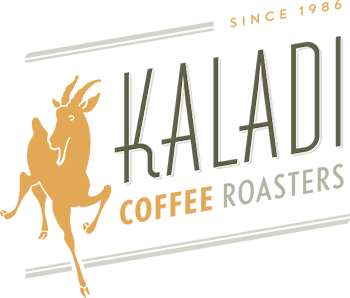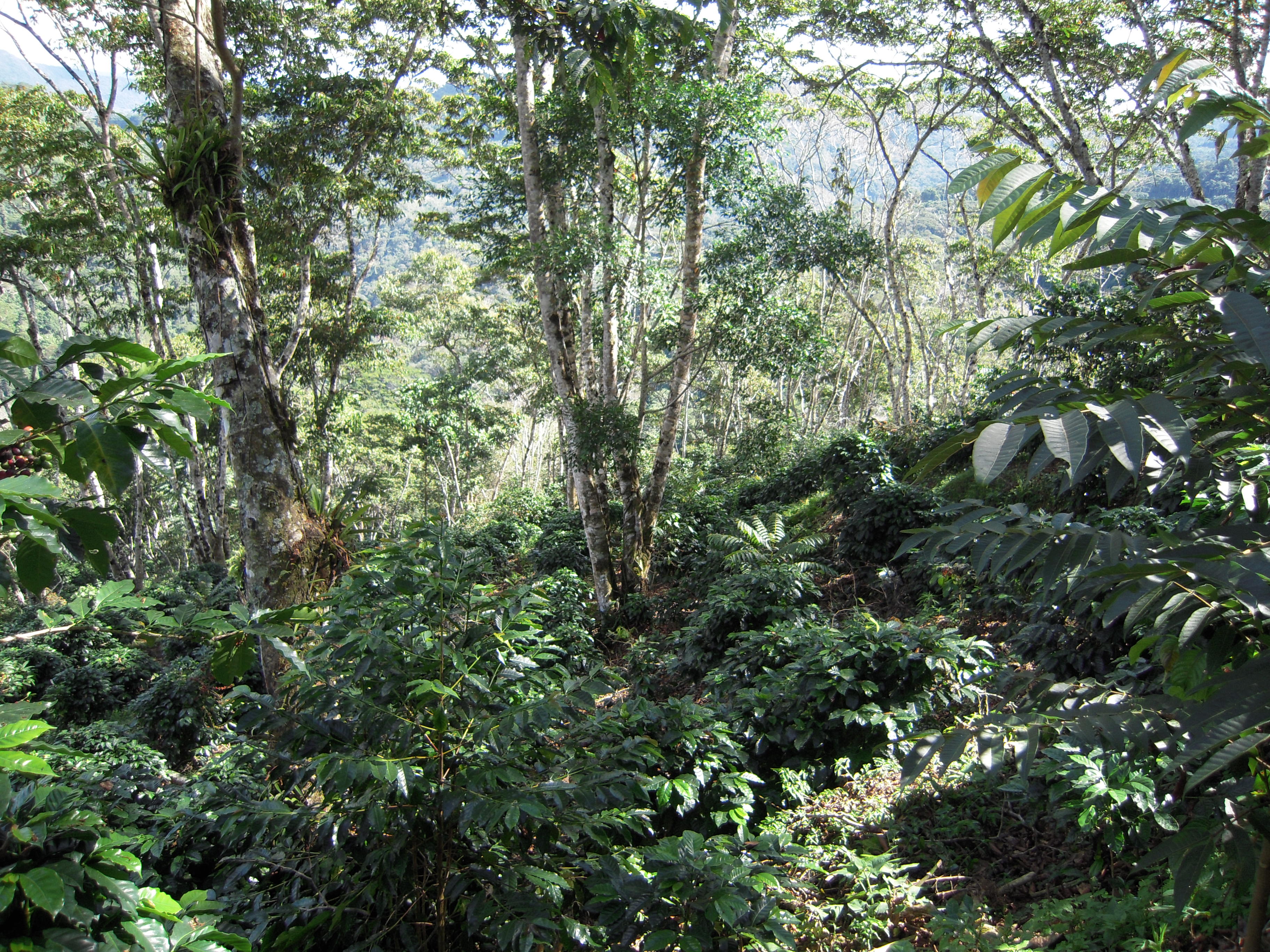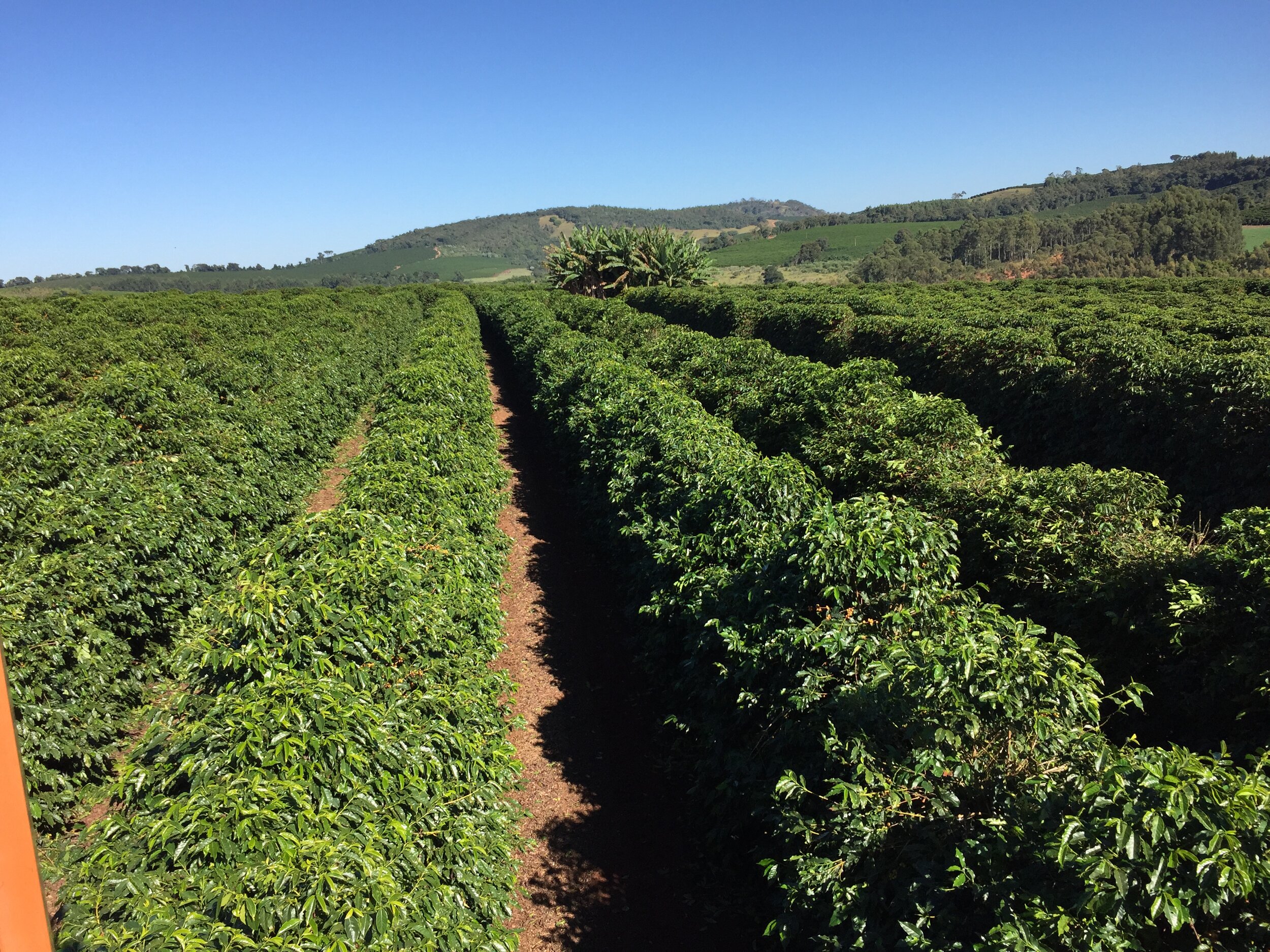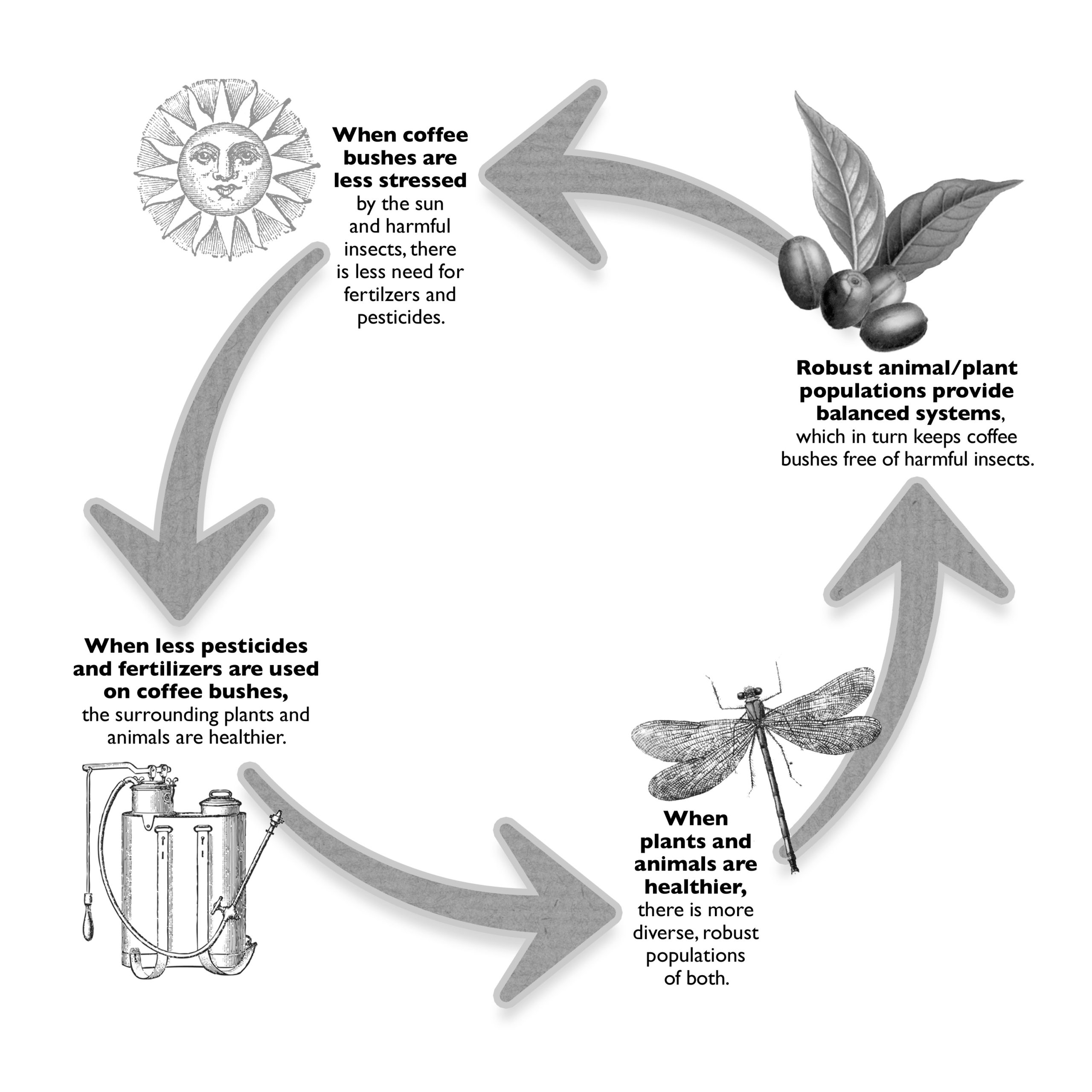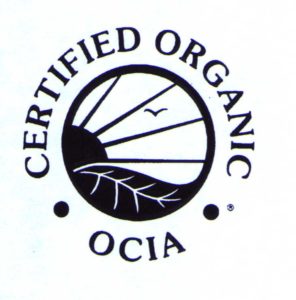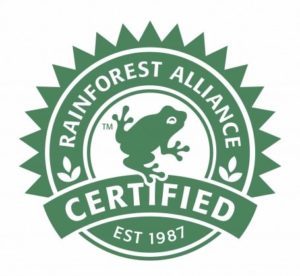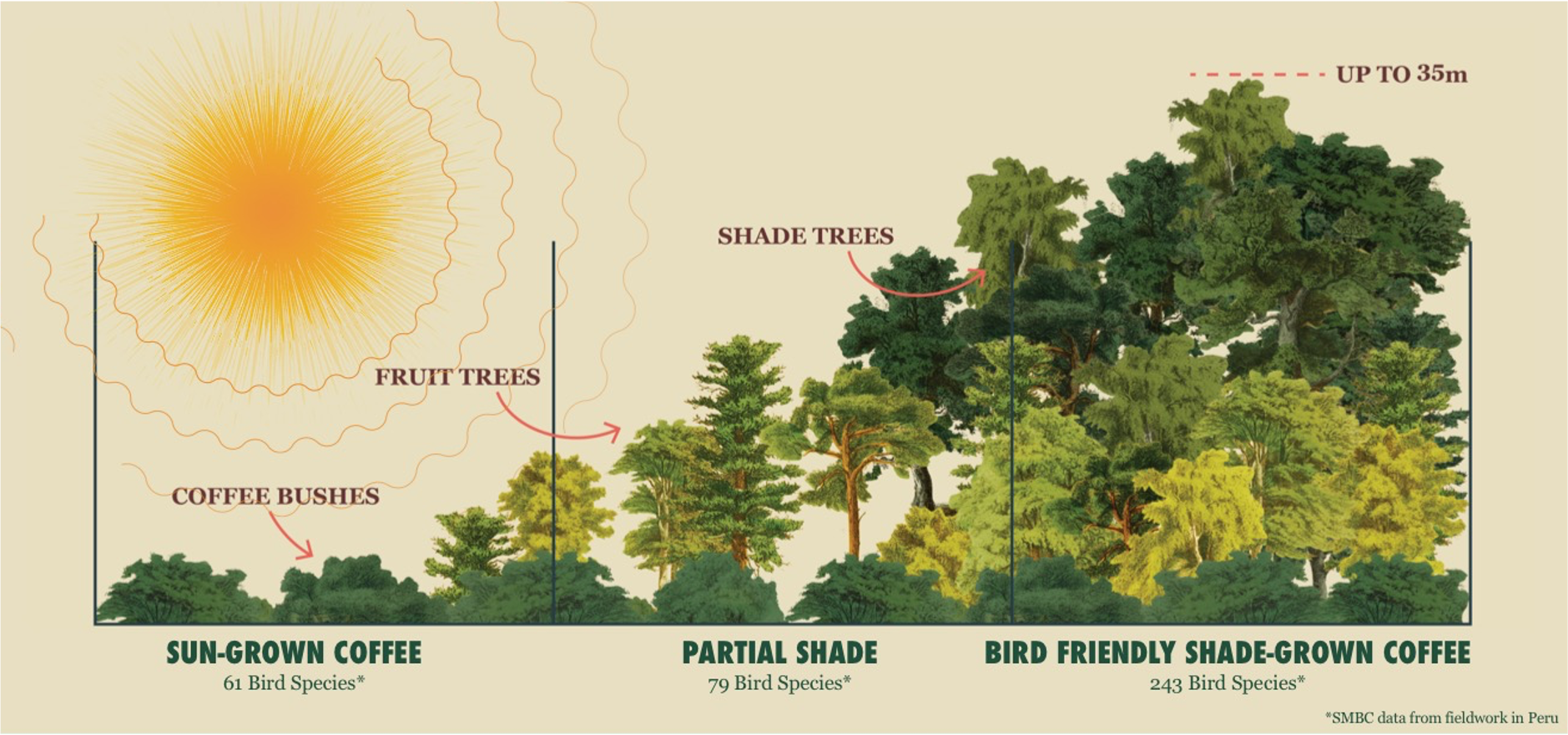The coffee tree, species coffea arabica, originated in northeast Africa but over the last five hundred years or so, made its way around the globe. More of an evergreen shrub than a tree, coffea arabica prefers to grow under a canopy of shade trees, interspersed with other trees and plants. This type of traditional forest garden maintains many benefits of a natural forest, with the forest cover limiting erosion, replenishing the soil, and fostering a rich environment.
In the last fifty years, however, coffee farmers have adopted new practices – the “green revolution” – for coffee farming. These techniques, sometimes dubbed “modern” or “technified” farming, swap the shade canopy for densely planted single species of commercial crops, such as coffee. The amount of coffee produced on such a farm can be three to five times as much as that from a traditional farm, but it comes at a considerable price.When other plants are removed, the ground must be heavily fertilized to make up for the loss of organic matter. Moreover, pesticides and fungicides must be used to combat the outbreak of disease and infestation, since the loss of plant diversity prevents necessary natural checks and balances from operating. These chemical additions degrade the soil, weaken the plants, and consequently limit the life span of the trees. These farms are commonly called “green deserts” due to their lack of habitat for indigenous and migratory fauna.
The removal of forest cover has serious environmental impacts on a larger scale, as well. Soil in these equatorial regions is largely made up of decomposing forest litter. Removing the diverse shade trees degrades the soil rapidly, as the coffee tree – evergreen shrub – does not routinely drop its leaves, therefore does not contribute to soil health. Additionally, the coffee tree is a nitrogen leaching tree, requiring other species to “fix” the soil by recalibrating its nitrogen levels. When no other tree species exists, this is done through the use of chemical fertilizers. Lacking a canopy of indigenous shade trees means that habitat for local and migratory bird species, along with other wildlife, is greatly reduced, leading to outbreaks of insects and disease in crops.
Not only does the environment suffer, but so too does the flavor of the coffee. Without rich soil, the coffee tree survives on a poor diet of chemical inputs. This, along with the adoption of hybrid coffee tree varieties that produce more beans, creates thinner and more acidy tasting coffee. As more areas of the world adopt technified farming, more and more coffee is overproduced, degrading both coffee quality and the environment.
But there are a number of ways to challenge these practices: look for certified products that promote environmental sustainability. These certifications come in a number of guises. Some, like certified organic, address the chemical inputs used in agriculture; others, such as Rainforest Alliance, address biodiversity and conservation; and some, like Fairtrade Certified, focus on small farmer cooperatives that support sustainable communities.
The gold standard for shade-grown biodiversity, however, is the Smithsonian Migratory Bird Center’s “Bird Friendly” certification. Bird Friendly does more than any other certification to conserve habitat for birds. Smithsonian scientists developed the Bird Friendly certification for coffee in the late 1990s to conserve habitat and protect migratory songbirds.
Bird Friendly habitat ensures a mix of foliage cover, tree height, and biodiversity that creates quality habitat for birds and other wildlife. This certification provides farmers with a premium for their products, and because of stringent growing standards, the Bird Friendly program is also a critical asset in fighting climate change.
Kaladi is proud to partner with the Smithsonian Migratory Bird Center to bring you SMBC Bird Friendly coffee. You can find SMBC coffee here.
